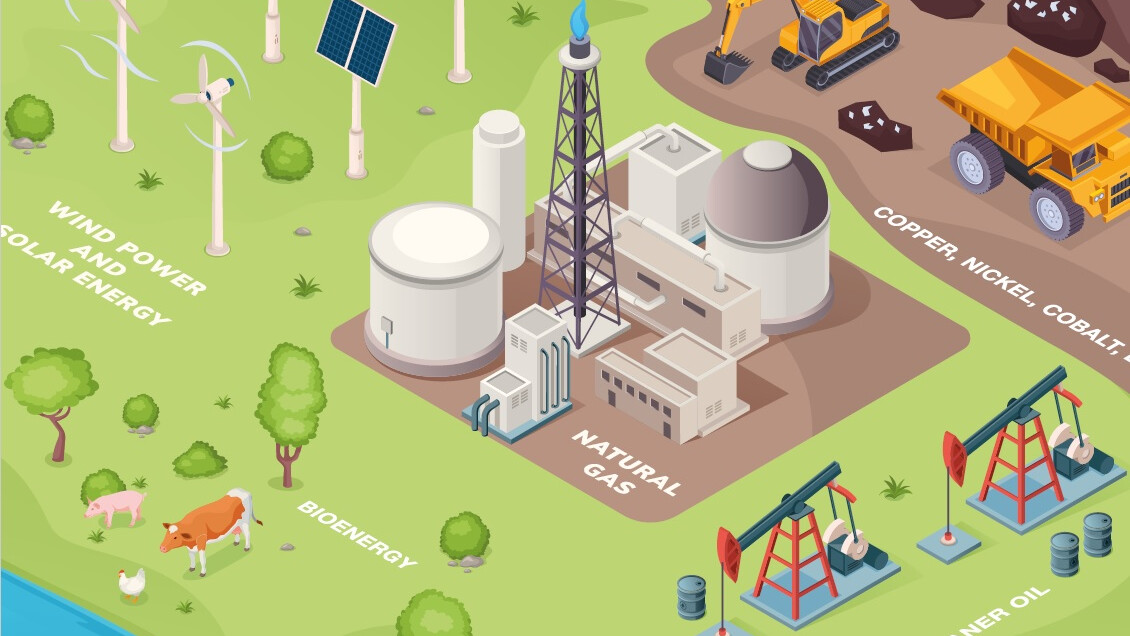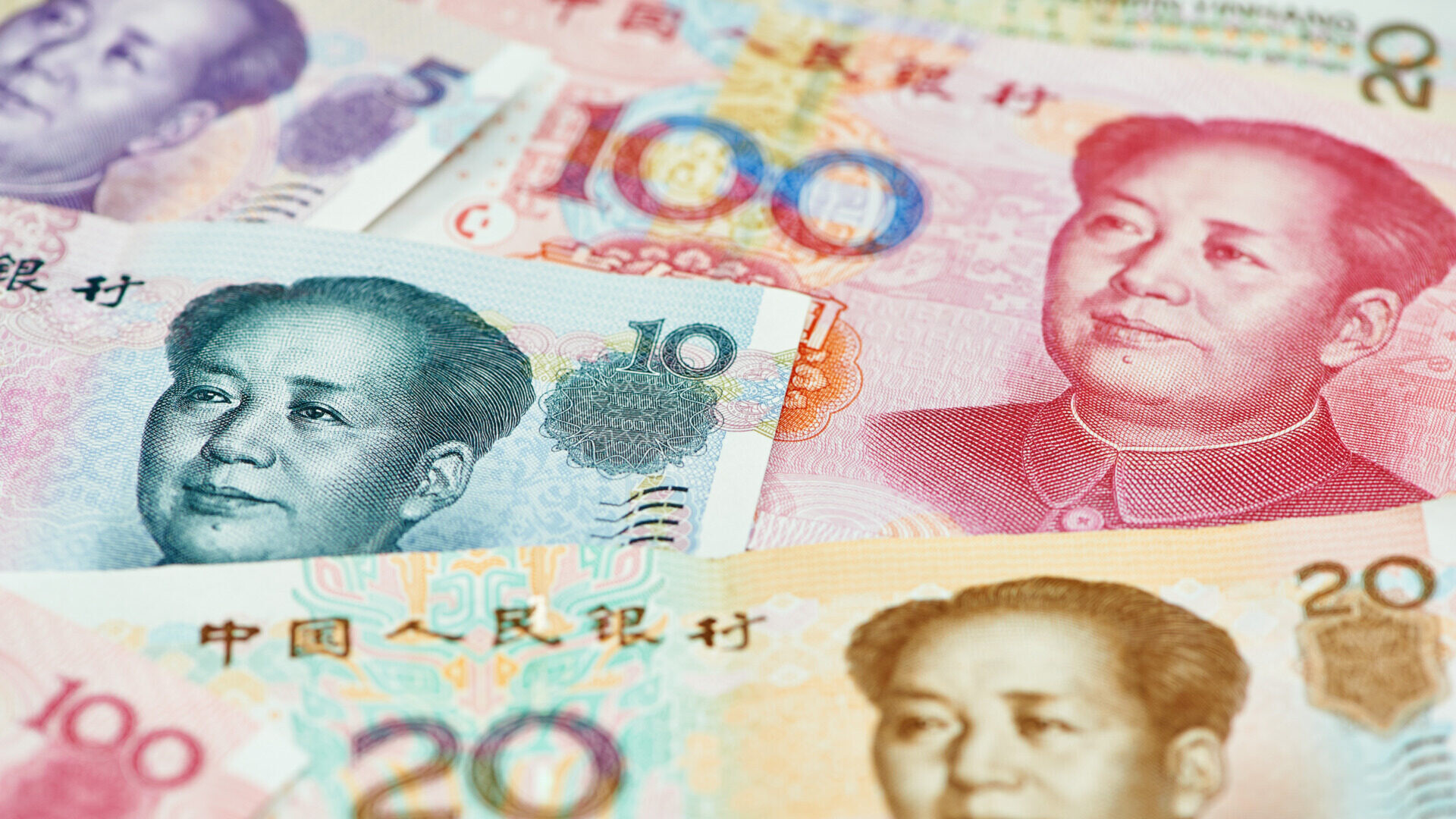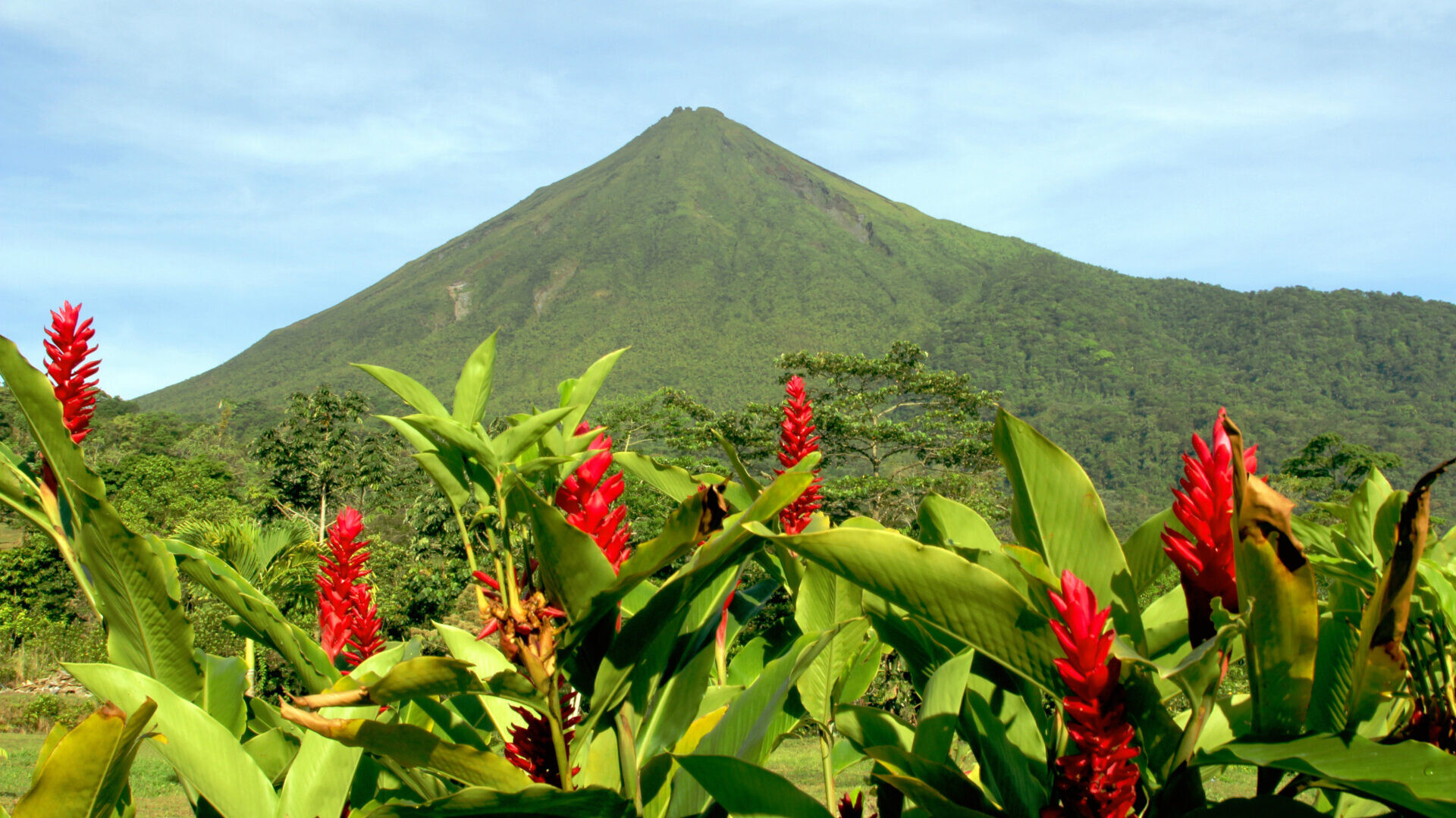Why resource-rich Latin America will thrive in the 21st century
The region is the world’s one-stop shop, boasting the raw materials required for the energy transition and key foodstuffs to cater for growing populations...

A new Great Game is afoot in Latin America. The US, China and the EU are scrambling to amass political power and natural resources in the region. The pandemic, the war in Ukraine and the energy transition are pushing these economic superpowers to secure critical supplies of food, metals and energy. And Latin America has more of these key commodities available for export than anywhere else in the world.
China was the first 21st century power to recognise the importance of Latin America and has been on a buying spree in the region since the first commodity supercycle began in the early 2000s. That’s been accompanied by a political push which has seen it persuade several Central American countries to switch official diplomatic recognition from Taiwan to China.
The US, which was guilty of taking its ‘backyard’ for granted, began to pay attention in 2016, when trade tensions with China encouraged the government and US corporations to explore new supply chains in Latin America. The EU belatedly caught up this summer, when it hosted its first summit with the region for eight years. Now it is trying to revive a trade deal – which has been stalled for more than 20 years - with Latin America’s largest trade block, Mercosur.
Since achieving independence around 200 years ago, Latin America has been a backwater in the world economy. But that will change as it becomes a key global supplier of everything from food to fuel.
Why Latin America matters
The energy transition is becoming the most important economic trend this century. Whether you believe in climate change or not, it’s clear that government pledges, such as the UK’s commitment to be carbon neutral by 2050, combined with corporate pledges - for example Toyota will no longer make traditional internal combustion engines from 2040 onwards – will funnel trillions of dollars into the energy transition over the next few decades. And Latin America, which is home to huge reserves of the critical metals needed for the transition, will be the main beneficiary.
Electric vehicles use far more copper than cars with internal combustion engines and the International Energy Agency believes that growing EV production means the world will have an annual shortfall of 2.4 million tonnes of copper by 2030. That’s positive for Latin America, which dominates copper production. Peru and Chile are the world’s largest producers of the red metal and their 40% share of global output is a similar to 13-country Opec’s control of the oil industry. The region’s share of the world copper market is likely to increase in the coming decades as geologists believe that Ecuador and Argentina could eventually mine as much of the red metal as their neighbours. At present Ecuador only has one large-scale copper mine, while Argentina has none. But a pipeline of multibillion-dollar copper mines is set to come online in both countries, which will catapult them into global top ten copper producers by 2030.

The IEA estimates that global lithium production needs to triple in size between now and 2030 to meet the extra demand for the metal which is a vital component in EV batteries. If that happens then much will have to come from Latin America, which holds the majority of the world’s reserves. The ‘lithium triangle’ of Bolivia, Chile and Argentina is believed to hold 54% of the planet’s supplies of the metal. Meanwhile other countries in the region, such as Peru and Mexico have started to make significant discoveries. At present, Chile is the world’s second-largest producer, but a lithium boom in neighbouring Argentina means that country will be the top global miner of the metal by 2030.
Latin America also has the world’s ‘greenest’ electricity grid. More than 60% of the region’s electricity is powered by renewable energy – more than anywhere else on the planet – and in some countries, like Costa Rica, that figure is almost 100%. At the moment the bulk of that renewable power comes from hydroelectric plants but solar and wind are growing quickly, as the region’s varied topography and climatic conditions gives it excellent renewable potential. That helps to attract energy-intensive industries that want to reduce their carbon footprint, as they can source their power from a renewable grid.
The abundance of renewable energy will also turn Latin America into a green hydrogen super power. Hydrogen isn’t natural commodity but the product of an industrial process that involves using lots of electricity to separate hydrogen from water. There are several remote places in Latin America with excellent renewable potential – for example solar in northern Chile or wind in southern Argentina – where the best way to use that energy is to turn it into hydrogen and export it to international markets. The fact the hydrogen is produced with renewable electricity means it is classed as ‘green hydrogen’ and receives a premium to other forms of the fuel. For example, the large Australian miner, Fortescue, is planning an $8billion green hydrogen project in Patagonia, Argentina.
The energy transition is becoming the most important economic trend this century. And Latin America, which is home to huge reserves of the critical metals needed for the transition, will be the main beneficiary.
The final Latin American energy resource to highlight is oil and gas. That might seem to contradict the energy transition theme but, the fact is, hydrocarbons aren’t going anywhere. The adoption of EVs will help curb vehicle demand but oil’s use in plastic, petrochemicals, aviation fuel, asphalt, paint and industrial applications means that demand will continue to rise. Indeed, the IEA estimates oil demand will be slightly higher in 2050 than it is today.
What is already happening though is that regulators and investors are favouring cleaner oil and gas projects – those that emit less C02 per barrel of oil produced, or don’t take place in environmentally-sensitive locations – over dirtier ones. That criteria will favour Latin America, which has 20% of the world’s oil and gas reserves. According to consultants McKinsey, the oil and gas produced in Argentina and Brazil – two of the world’s fastest-growing hydrocarbon plays – emit less C02 per barrel of oil equivalent than the world average.
Food and nature
The energy transition isn’t the only trend working in Latin America’s favour. The world’s growing population – the UN estimates it will peak at 10.4 billion in 2086, up from 7.9 billion today – will drive demand for food in the coming decades. Long-term population estimates are notoriously unreliable but even if the population growth is less than the UN calculates, food demand will also be pushed upwards by the increasing consumption per capita of citizens in emerging markets. As countries grow wealthier, their people inevitably consume more calories and protein. And governments looking to feed their populations are already looking to Latin America. For example, an Abu Dhabi investment vehicle controlled by the brother of the UAE’s ruler, recently spent $2.7billion to acquire Colombian food conglomerate, Nutresa.
Latin America contains almost a quarter of the planet’s forests, a quarter of its cultivable land and one-third of its freshwater. It is the world’s largest producer of many of the non-essential but tasty items you will eat this week, such as bananas, sugar, coffee, pineapples, shrimp and tuna. It is also a major exporter of more basic soft commodities that help keep the world’s population fed – ie soybean, wheat and maize. Latin America is certainly not immune to climate change and the types of crops that are grown in different places will alter over time as temperatures rise. However, the abundance of water in the region, plus the vast swathes of currently unused arable land, mean that it will be humanity’s best option for meeting coming food demand.

Biodiversity is another important natural asset for Latin America, which is the most biodiverse region in the world. Incredibly just one hectare of land in the Amazon jungle contains more flora and fauna than the entire North American continent. And we’re not just talking about one hectare – the vast Amazon biome stretches across eight countries and is roughly the same size as the 48 contiguous states of the US.
Until recently, those types of statistics were only of interest to environmental activists, but the UN’s landmark biodiversity deal, which was signed in Montreal last year, will mean nature becomes increasingly important for business. In the same way that a UN deal – the Paris Agreement in 2015 – led companies to follow suit and make climate change pledges, now the Montreal-Kunming Global Biodiversity Framework means companies will eventually measure and mitigate the impact they have on nature.
Latin America will benefit from inflows of sustainable capital. For example, earlier this year Ecuador completed the world’s largest debt-for-nature swap by refinancing existing government bonds – saving of $1billion in interest costs – in return for conserving ecosystems in the Galapagos Islands.
Another example of the growing economic value of diversity comes from Brazil where deforestation was down 33% in the first six months of this year, compared to the same period last year. The new government is determined to replace the illegal miners, loggers and farmers currently deforesting the Amazon, with new industries that work with biodiversity, for example biotechnology firms that turn turns flora into valuable pharmaceutical products. The administration is also launching a carbon credit scheme that will place a monetary value on the Amazon’s vital role in sequestering C02. In the coming decades the world will funnel money into Latin America to protect its unique stores of the world’s natural capital.
The crucial point isn’t just that Latin America has lots of resources, because China and the US also have plenty of commodities. The key is that Latin America is almost the size of China and the US combined with a third of the population. The region has less than 10% of the planet’s people but a much larger share of its reserves of energy, metals and food, which makes it a natural exporter. And those export revenues will increase exponentially over the next few decades as superpowers compete to secure supply chains.
Not just commodities
For centuries European investors have been captivated by Latin America’s natural riches but there is more to the region than just commodities. Despite its reputation of being a risky jurisdiction, Latin America is more peaceful than Eastern Europe, less corrupt than Africa and more democratic than Asia. They are broad brush generalisations, but when you dig deeper, they reveal solid advantages for international investors in Latin America.
The majority of Latin America has been democratic since the 1980s. During those three decades important institutions developed that nowadays provide economic advantages to the region. The most obvious are Latin America’s independent central banks, which outperformed their counterparts in the rich world. They reacted to inflation by raising rates more quickly, for example Brazil raised its benchmark rate a full year before the US Federal Reserve. It is telling that populist leaders in the region’s two largest economies – Brazil and Mexico – were unable to influence central bank decision making.
The economic benefits of independent institutions are clear, with Latin America’s GDP growth surprising on the upside so far this year, while inflation is falling. Indeed, central banks across the region are now cutting rates, which will provide further economic upside. Investors are already benefitting as Latin American local currency sovereign bonds are up 21% this year outperforming the rest of the world. As Mary McDougall notes in the FT, the gap between emerging market and developed world borrowing costs are the lowest since 2007.
Latin America also benefits from a peace premium. Yes, many countries in the region find themselves – somewhat unfairly – at the front line of the war against drugs. But, if you exclude some border skirmishes between Peru and Ecuador, the region’s last major war was almost 100 years ago. The war in Ukraine has shown the advantages of sourcing fuel and food from Latin America, as they won’t be interrupted by conflict. Its geopolitical neutrality in the tensions between the US and China is also an asset for Latin America’s miners as the region exports metals to both blocks.
Relatively strong institutions also give Latin America a social premium, which is expressed in different ways. For example, Africa produces more cacao, nickel and cobalt than Latin America. Yet child labour is rife in African mining and agriculture, which means socially responsible industrial consumers prefer to source those commodities in Latin America, where it is less prevalent.
As the UK’s only Latin America-focused investment magazine, we know how hard it is to dispel popular images of drug lords, caudillos and coups and convince investors that Latin America is safer and more sophisticated than they realise. But one clear indicator is the massive tech boom taking place across the region. Private investment in Latin American tech increased from $6billion in 2015 to a record $29billion in 2021, which was almost as much as India received. Internet penetration in Colombia, Brazil, Mexico, Chile and Argentina is higher than in China or India. The tech boom doesn’t just show that Latin America is more advanced than outsiders realise, it will also help increase economic productivity in the region.
Another boost for productivity will come from nearshoring. Competition between the US and China is already forcing companies to relocate factories out of Asia. Mexico will be the main beneficiary, but Central American and Caribbean economies will also see leading international manufacturers opening factories.
Climate change – and the efforts to fight it by switching to renewable energy – will define the global economy in the 21st century. And Latin America’s status as the planet’s quartermaster means its surprisingly well-run economies will be the big winners.
A version of this article first appeared in MoneyWeek on the 15th of September 2023